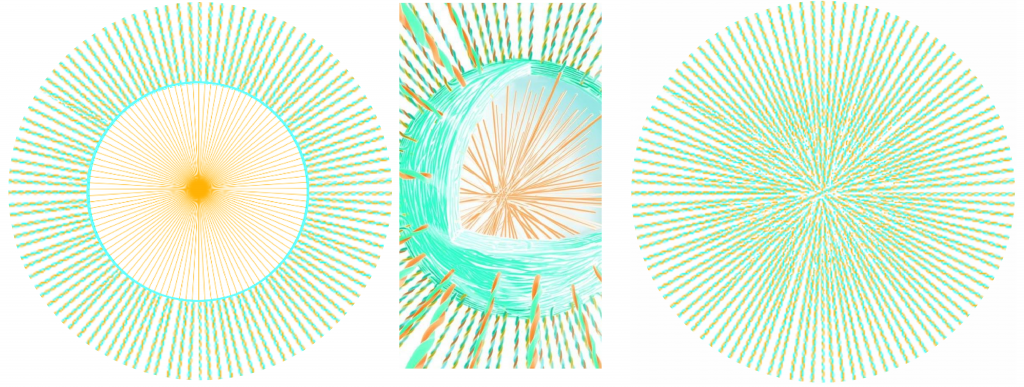Under the Rope Hypothesis, the architecture of the mediator of light has the appearance of a DNA-like, double helix. The electromagnetic (EM) rope consists of two twined threads.
When the rope reaches the surface of an atom the strands fork out. One fiber continues straight to the center of the atom. To keep with convention we refer to this thread as the electric thread. The electric threads from every atom in existence converge upon the center of the atom and comprise the proton star.
The other thread, which to keep with convention we will call the magnetic thread, coils around and forms the surface of the atom. The magnetic threads from every atom in existence construct the electron shell. This membrane encapsulates the proton star.
The rope model of the atom enables us to visualize the neutron. It also helps explain atomic features and behaviors such as Quantum Jump, charge, energy, and action-at-a-distance.
2D Atom – 3D Atom – Neutron
The hydrogen atom has two components: the proton and the electron. The proton is a star-like structure comprised of electric threads converging from every atom in the Universe. The magnetic threads from every atom in existence fork at the boundary of the atom, coil around, and weave the electron membrane that encapsulates the proton star. A neutron does not have charge because it is merely a convergence of EM ropes.
